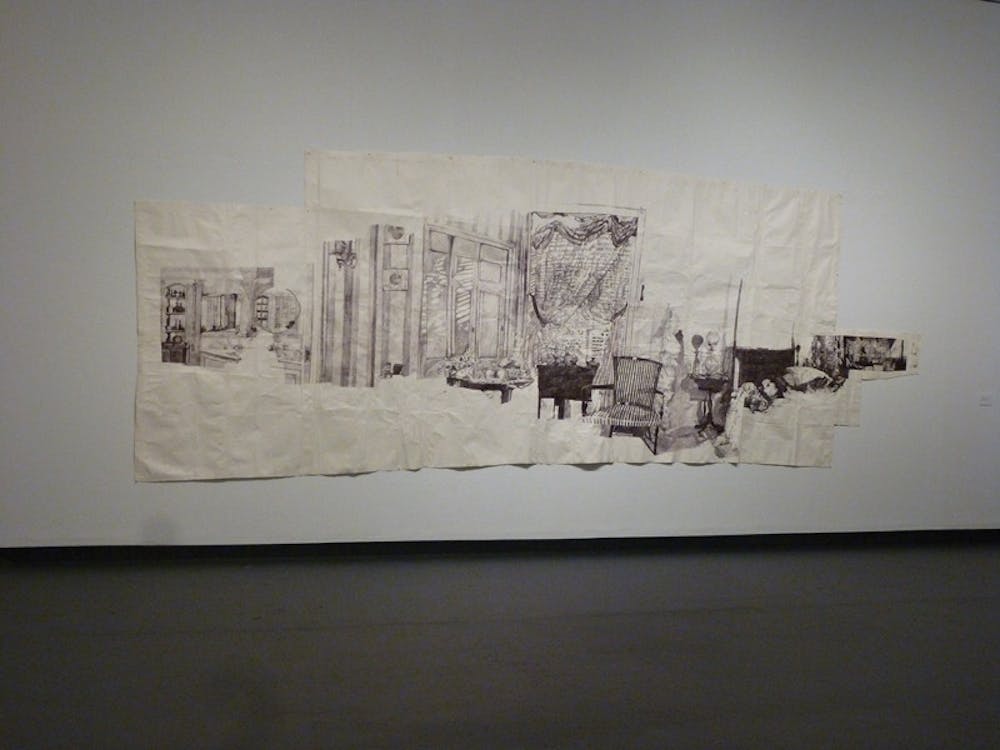In List Art Center hangs something of a college reunion — Dawn Clements ’86, Paul Ramirez Jonas ’87 and Kerry Tribe ’97 were all invited back to their alma mater by the Department of Visual Arts in anticipation of the University’s 250th anniversary celebration.
The unfortunate aspect of the Alumni Anniversary Exhibition is its lack of clear coordination. It is not so much the art as the exhibit design itself — which is an aesthetic and aural cacophony, loosely tied together by the vague string of “cultural phenomena,” according to the exhibit description.
The exhibit begins in the List lobby with the works of Jonas, an artist who “explores social relations as an artistic medium,” according to his gallery bio. “The Commons” — an equestrian model made up entirely of cork and pushpins — invites visitors to attach messages to the object in order to facilitate a social conversation. Another, “Assembly,” layers blueprints of the Globe Theater, the U.S. Senate chamber and suburban households. Isolated, Jonas’ works are a sound treatise on social interactions and the commercialism attached to the practice.
But then there’s everything else. Inside the actual David Winton Bell Gallery, the stark sketches of Clements are an immediately repelling force. Her works are inspired by the “hyper-realism” of cinema, but her use of abstraction obscures these intentions.
Each of Clements’ sketches consumes an entire wall and offsets the crowded activity of Jonas’ pieces. The exhibition organizers argue representations of “cultural phenomena” link these artists, but the connection is vague at best. Clements’ finest piece is “Grass,” a gyrating bloom of greenery, suggesting a cosmic wholeness that the other pieces in the exhibition lack. Alone, this piece is impeccable — but what is it doing alongside Jonas’ social analysis?
And then there is the aural havoc raging in the next room. Tribe installed two video pieces on the subject of collective memory. His film features maudlin performances and kitschy conventions as a method to explore recycled culture. The sound generated by these gun-toting scandals and soap opera tropes bleeds into Clements’ domain, and the aural spillover disrupts the fragile stoicism that Clements’ works demand.
Overall, the spatial dynamic of the Alumni Anniversary Exhibition is dissonant and painful, marring otherwise impactful pieces on social construction and cultural representation.

ADVERTISEMENT




